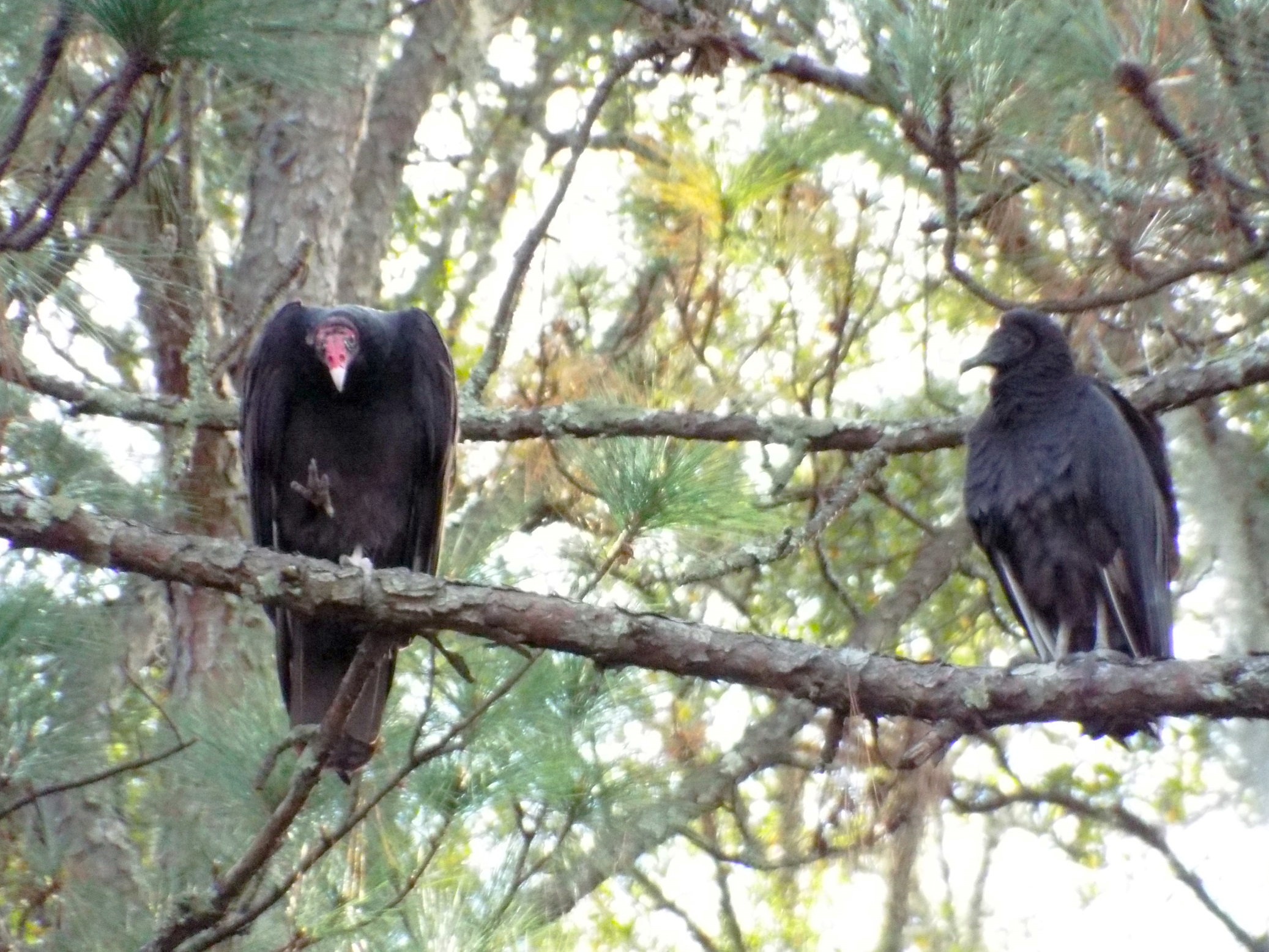
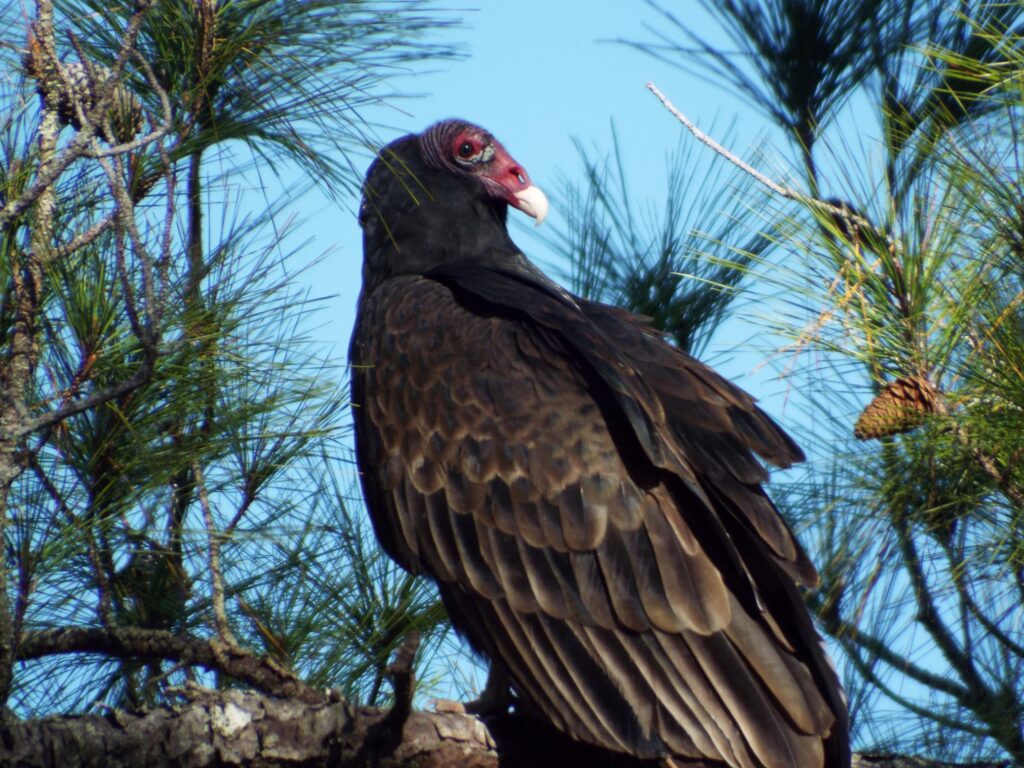
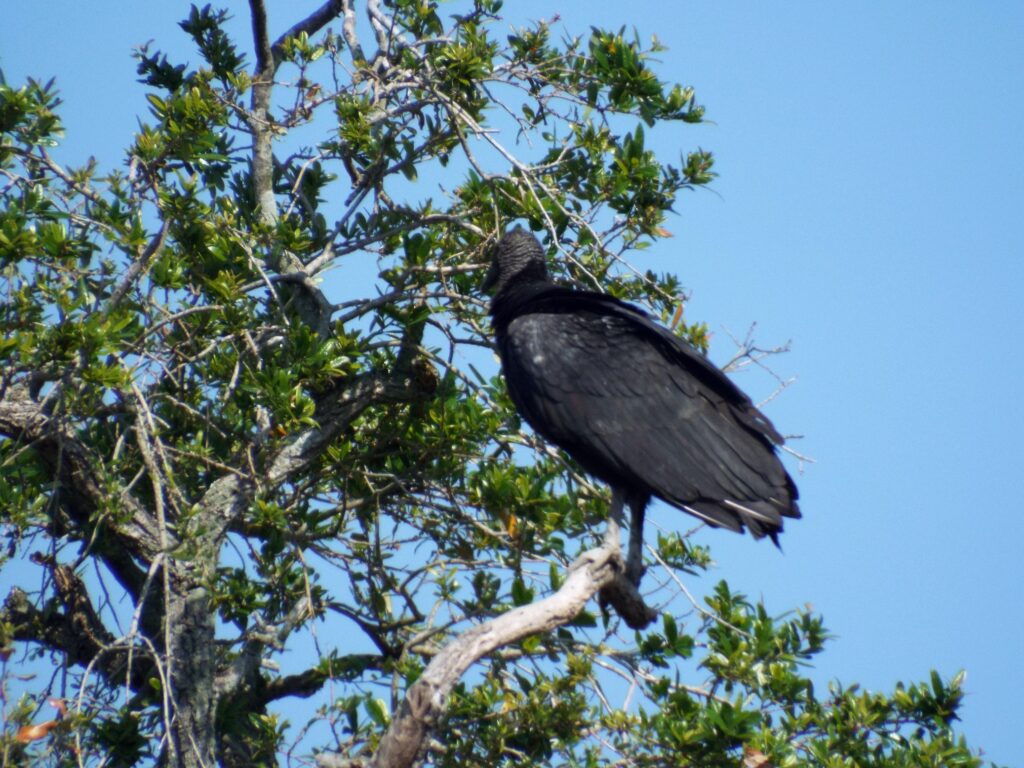
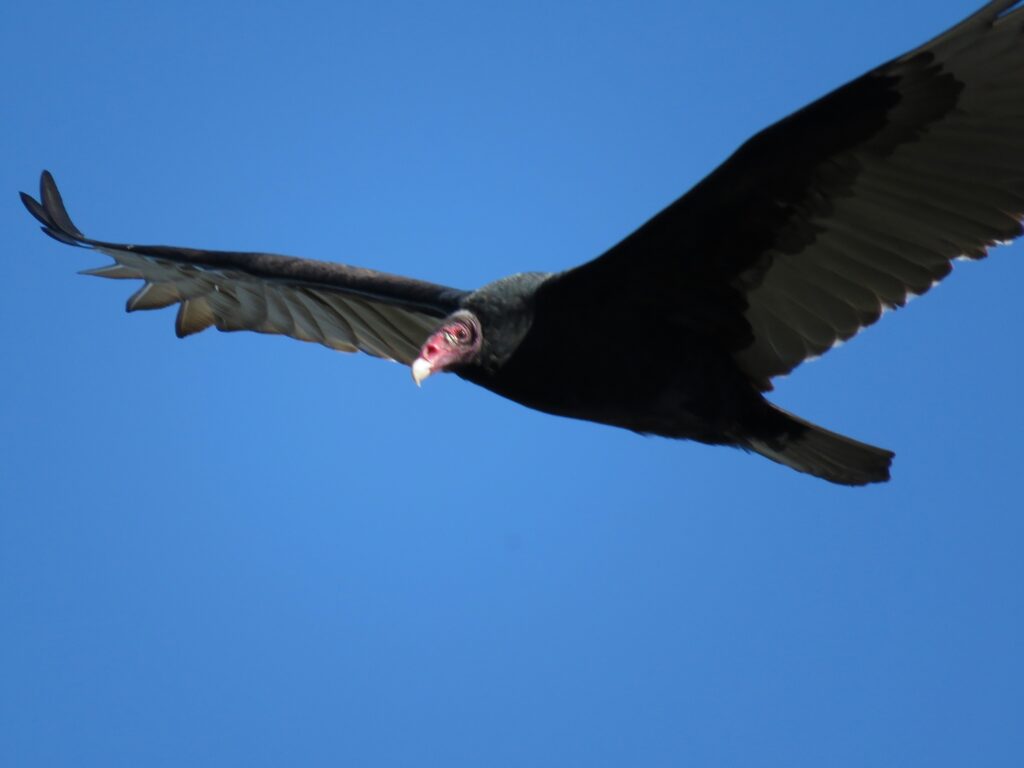
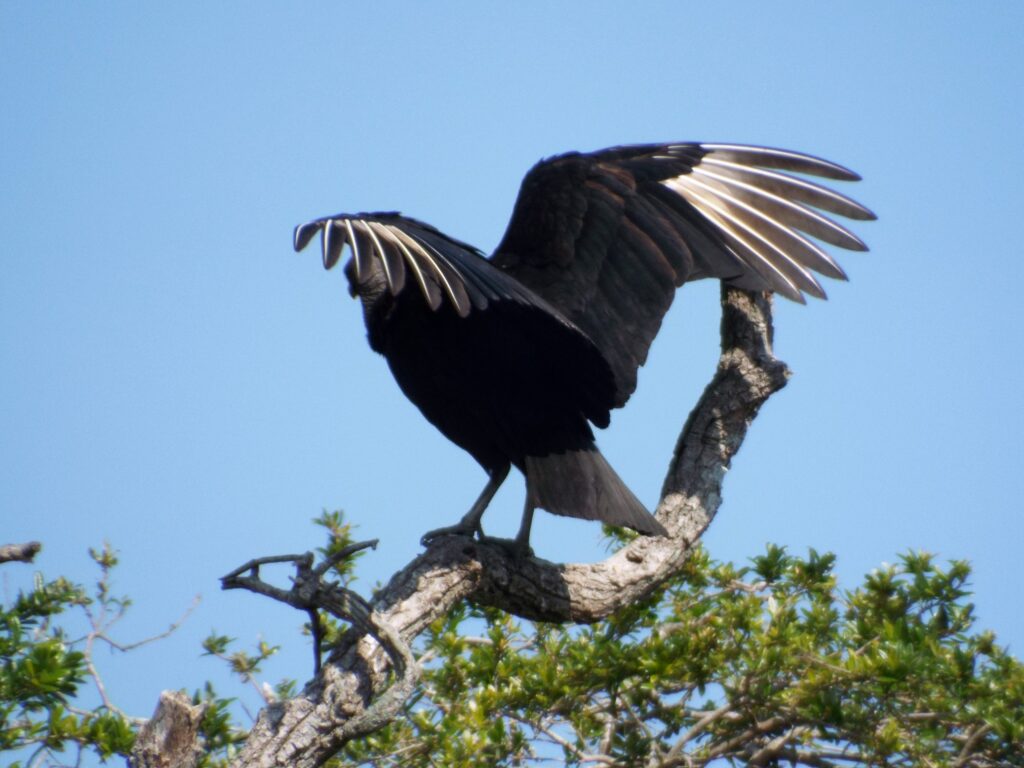
This week for flora and fauna Friday we’ll be examining a pair of birds that are a familiar site along scenic highway 174. This week we’re talking about Vultures.
In South Carolina there are two species of Vulture, the Turkey Vulture (Cathartes aura) and the Black Vulture (Coragyps atratus). Both of our Vultures have dark plumage, featherless heads, great senses of smell and vision, and feed on dead animals. (On a side note, the term “Buzzard”, which is often applied to Vultures, is actually the name of several Old World Hawk species that will eat carrion but prefer to hunt prey.) Vultures lack feathers on their heads because of the nature of their diet. Feathers would get in the way of feeding on carrion and rot from continuous exposure to bodily fluids and bacteria. Thus, our Vultures have lost the feathers on their heads to avoid these complications. Vultures sun their dark feathers in the heat of the day for the same reason. This scorching heat serves to cook bacteria and parasites that cling to their plumage. Vultures, predictably, have extremely robust immune systems. It’s kind of a prerequisite if you’re eating rotten meat for a living. They are essentially immune to diseases like Anthrax, Salmonella, and Botulism! Vultures provide a valuable ecosystem service by eating carrion. By eating carcasses before they rot, Vultures help prevent the spread of disease and mitigate the localized disturbances to plant and invertebrate communities caused by decomposing animals. Adult Vultures, due to their unsavory lifestyle, have almost no natural predators.
Turkey Vultures can be distinguished from Black Vultures by their pink-red heads and legs, dark brown plumage, and more slender, raptor-like physique. On the wing, Turkey Vultures are readily identified by their gray primary and secondary feathers, rickety flight, and wings held upward in a dihedral aka a shallow “V”. Turkey Vultures get their name from their resemblance to the Wild Turkey. Both share a bald, pinkish head and dark brown plumage. The Turkey Vulture is a very efficient flier and can kettle high in the air for hours and miles on end, without flapping its wings once. They accomplish this by exploiting thermals and small scale turbulences along forest edges. Turkey Vultures have one of, if not the best, sense of smell of any terrestrial animal. They also have acute vision. This allows them to smell and locate carrion before any other scavenger can, all while circling high in the air. Turkey Vultures are often the first scavenger on a carcass and typically get to take their pick of the choice bits before their competition arrives.
Black Vultures can be separated from Turkey Vultures by their wrinkly gray heads and legs, black plumage, and a more robust, stork-like physique. Black Vultures only have gray primary feathers and their flat, forward-held wings and more direct powered flight style allows for an easy ID in flight. Black Vultures have eyes as equally keen as those of Turkey Vultures but have a less developed, although still impressive, sense of smell. Black Vultures are more energetic, boisterous, aggressive, and tend to travel in groups. Black Vultures have adapted to exploit these personality and physiological differences to their advantage. Black Vultures tend to circle higher in the sky than Turkey Vultures. From this vantage point they sniff and stare for carrion like any other Vulture but also watch for the lower flying Turkey Vultures. When they identify Turkey Vultures, or other Black Vultures, flying low over an area, they pursue the other birds in hopes of being led to a meal. This often results in Black Vultures swarming and stealing a carcass from the less aggressive and more solitary Turkey Vultures. This results in the common roadside spectacle of a dozen or two Black Vultures bounding, flapping, and encircling a roadkill. Black Vultures are also known to hunt some prey and will primarily target newborn or juvenile animals as a group.
Being a scavenger, Vultures are especially susceptible to threats from environmental contaminants. If an animal dies from poisoning or chemical contamination, a Vulture is likely to feed on its carcass and itself be poisoned. They also are at risk of gradual poisoning due to a concept called bioaccumulation. Bioaccumulation is where contaminants, such as heavy metals and pesticides, can accumulate in an animal overtime from eating contaminated food. These contaminants may not exist in this animal at dangerous levels but the predators that eat these contaminated animals will retain those same contaminants at an even higher concentration, so on and so forth up the food chain. This was the principle behind why DDT was devastating on carnivorous birds, like Eagles and Condors, but not their prey. As a carrion eater, Vultures sit at the peak of the food web and are especially susceptible to bioaccumulation. Although not as bad as the California Condor, our eastern Vultures took a hit from the widespread use of DDT. However, Vultures are one of the few animal species that have benefitted dramatically from human encroachment and habitat fragmentation from the construction of highway networks. This helped them quickly recover from the declines caused by DDT. Roadways are a huge source of mortality for many species of mammals. While bad for mammals this provides a smorgasbord of food for Vultures. The ribbons of asphalt through the woods create thermals and canopy opening that facilitate Vulture flight and their ability to see carcasses. In fact, the ranges of both the Black and Turkey Vultures are expanding northward because of this!